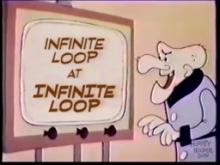“The never-ending notary nuisance,” or, “infinite loop at Infinite Loop”

A couple weeks ago, Apple posted a note that says:
In an upcoming release of macOS, Gatekeeper will require Developer ID–signed software to be notarized by Apple.
Being a developer of Developer ID-signed (i.e., non-App-Store) software, I set out to vault Apple’s latest hurdle.
Xcode includes a command-line utility called altool that manages the notarization process. That seems appropriate since my app isn’t built using Xcode’s build system.







